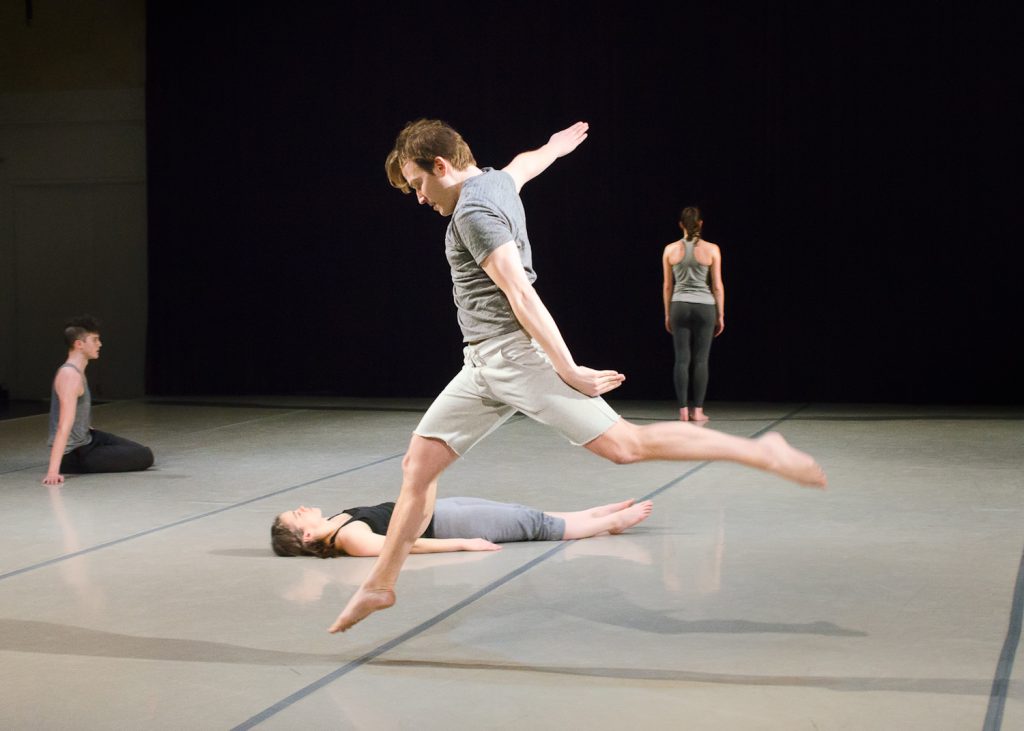I subscribe to the Poetry Foundation’s Around The City emails that contain information about events happening in and around Chicago. It was in February when, two-thirds of the way down the list of events, I landed on a name I had never heard before who would be coming to the city in March, performing at the Poetry Foundation, and doing something that for years I had struggled to do: integrate poetry with dance.
For so long I’ve felt split between these two distinctive artistic communities. Perhaps the division is partly imagined, but I do believe it manifests in real ways. The first time I experienced this was in college, when I had to choose between the two for my degree (though luckily, I was able to keep practicing both). At the time, I didn’t know many people who made work that combined writing and dance, and as a result, I felt alone. Combining the two was something I wasn’t able to do until graduate school, so when I read the description of Ian Spencer Bell’s upcoming performance, my heart leapt.
Ian Spencer Bell is a dancer and poet combining the two in performance. He was awarded a grant from Virginia Commission for the Arts and a fellowship from Lambda Literary and Jacob’s Pillow, where he danced with his group on the Inside/Out Stage. In NYC he has danced at the National Arts Club, Queens Museum, and Socrates Sculpture Park. Bell trained at North Carolina School of the Arts, School of American Ballet, and Pacific Northwest Ballet, and graduated from Sarah Lawrence College. You can learn more about his accomplishments and when he’s performing here.
The description of Bell’s event positioned him as an artist who “writes and choreographs simultaneously, often relying on the music of his poetry to locate an emotional force and guide the rhythm of his movement.” I was thrilled, made it a priority to attend, and have been unable to forget his performance since.
First of all, I think it’s important to note that the space in which Bell performed at the Poetry Foundation is beautiful. The performance hall has large floor-to-ceiling windows on sections of the north and west walls, some of which look out onto the street. At night, the layers of glass create a quasi-mirror that just barely allows a person inside to see out into the city. Inside of the space, the walls and ceiling are gray and beige and the floor is concrete, giving the hall a minimal aesthetic. We sat on folding chairs in a half arc with two small separations for aisles through which Bell entered and exited.
Referred to as “talking dances” on the Poetry Foundation’s page, Ian Spencer Bell’s performance was very much that: he moved while simultaneously reciting his poetry. Throughout the dance, he also removed his shoes, pants, sweatshirt, and shirt, movements to some might only read as gestural but to me are still part of the dance. In fact, it was these moments that I found incredibly tender and important. I interpreted the removal of his garments and shoes as a metaphor for exactly what Bell was doing in the space: revealing himself, all of his layers and multiplicities, making himself vulnerable in front of an audience who, quite likely, may not have as many experiences attending dance performances as poetry readings.
It’s also significant that Bell didn’t simply move separately from the poetry he recited; the movement had clearly been thoughtfully choreographed to correspond to the words he spoke. One word that was repeated in Geography Solos was the word “pink.” Bell had a precise movement that accompanied this word and that really moved me; it exposed the layers of meaning that the word possesses for Bell. I found that both endearing and brilliant.
As a dancer, using the voice can be a subversive act. Any dancer can tell you there’s an element of not talking that’s encouraged in the dance world, especially in one’s early years of training. This is not to say speaking and dancing have not been combined before, or encouraged. Dance theatre is an established sector of dance that has been gaining momentum, and the voice is often integral to these works of art. However, in poetry, voice is usually seen as very close to the art. Why shouldn’t the two be combined, and quite frankly, why not more often?
It is clear that Bell approaches his “talking dances” with grace and intelligence, and that he’s able to do so in a way that blurs the lines between these two distinct artistic worlds. Bell’s work is an invitation to us all, to use our talents to make something uniquely our own.
Image courtesy of ianspencerbell.com.




